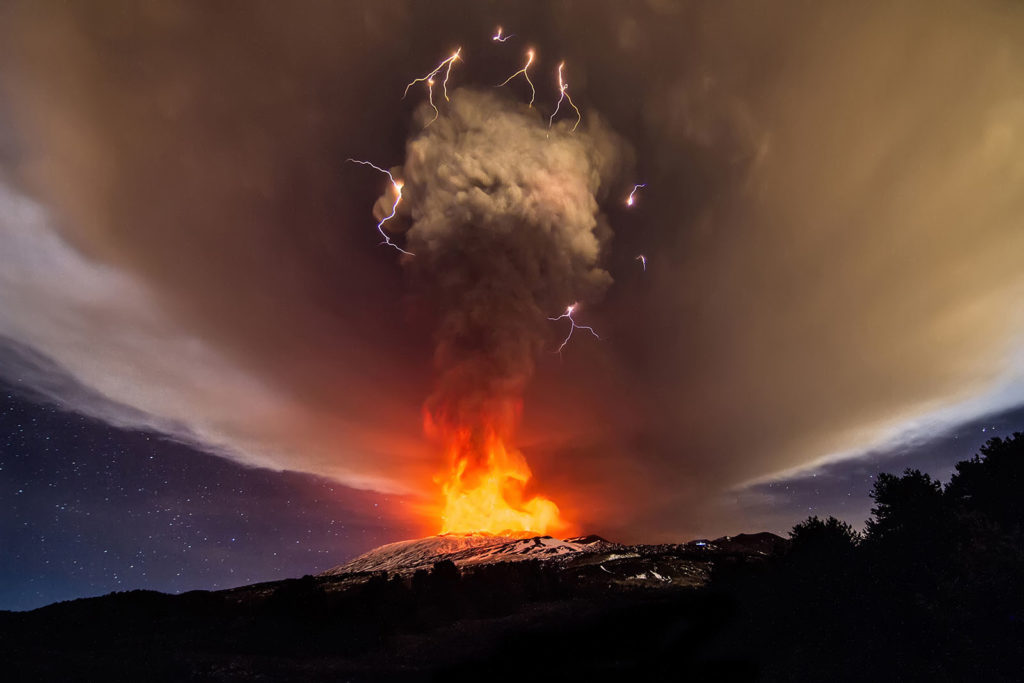Etna’s activity during the last 500 years has been very varied in terms of type of eruption, frequency and volume. The period of greatest activity in terms of volume and frequency of eruptions was the 17th century, when in less than one hundred years around 3 km3 of lava was emitted (in comparison to 1 km3 between 1689 and 1971).
After this period of intense activity, culminating in the 1669 eruption, there were no more events with large volumes until 1971, and their frequency also decreased. The only particular and noteworthy eruption in this period destroyed the town of Mascali in 1928.
After 1971 there was an increase in the frequency of eruptive events and volumes.
The major eruptions were in 1983, 1991-1993, until the eruptive cycle of the major eruptions in 2001, 2002-03, 2004-05, 2006 and 2008-10. These were characterised by
explosive Strombolian activity
accompanied by the emission of abundant lava flows, mostly in the Valle del Bove.
Since 2011, on the other hand, there has been an increase in paroxysmal Strombolian events, with the emission of large quantities of ash into the atmosphere, through the formation of lava fountains more than 1 km high.
This type of activity, through which the volcano is able to “dispose of” the magma from the earth’s mantle, has been preventing the formation of large lateral or sub-terminal eruptions since 2019.
